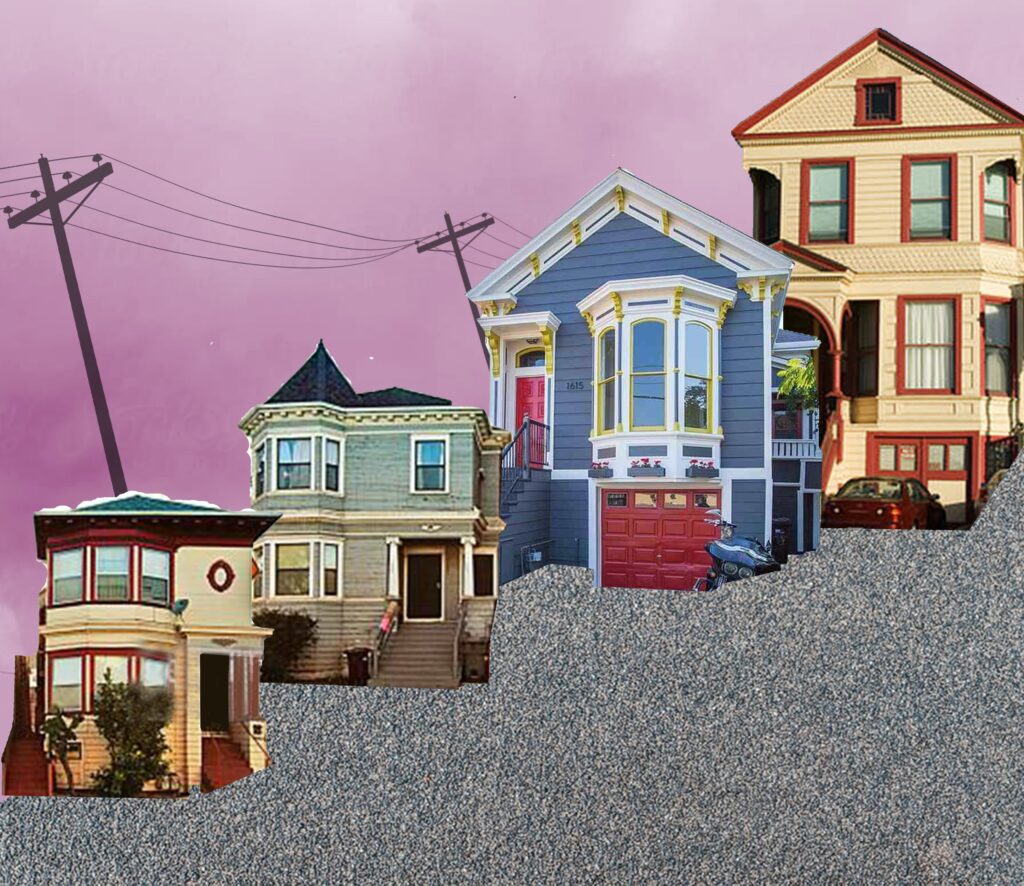
“Passeggiata: a stroll; a traditional evening stroll in the central plaza by a town’s residents.”
I first encountered the term while reading in preparation for a long-awaited trip to Italy, the land of my forbears. To better understand their culture, I turned to travel books and novels about Italy, which expounded on the unique aspects of Italian culture. One of these aspects is the meaningful social dimension of connection that I find we are often lacking in the U.S., and this is evident in the ways in which we inhabit urban spaces.
My trip abroad, pre-COVID-19, afforded me the experience of taking part in nightlife in southern Europe and seeing the
When the COVID-19 pandemic began, I was reminded of this experience by changes that fostered community in my neighborhood, Temescal. Through the Slow Streets Program, the city of Oakland closed streets to vehicles starting last April by using barriers and signs to designate them as car-free. In Oakland, Webster Street has become a pedestrian oasis, extending through Mosswood and Temescal into Rockridge. Since then, we pedestrians have taken over the streets, utilizing the full width to roam while interacting and maintaining social distance. During the pandemic, getting to walk my dog down the middle of the street and engage in conversation with neighbors from a distance has been an unexpected silver lining. For myself and for so many others, this freedom has helped make the confinement of the pandemic more bearable.
Throughout the past year, there has paradoxically been a greater sense of unity and connectedness in my neighborhood than there ever was before. In those evening hours when people come out and take a walk together, we are able to connect as a community. It allows people exhausted by a day spent in close quarters to finally experience fresh air and nature. In addition to the obvious exercise benefits, the sense of connection that this city project has enabled is vital to our health and it should be continued.
The closing of streets has taken place throughout the country and has occurred in Minneapolis, Washington, D.C. and New York City in addition to Oakland. New York City, perhaps the most dramatic example, has managed to banish cars from certain sections in a “mass experiment” set in motion by the pandemic, as reported by the New York Times. Now, many New Yorkers seem to want permanent change and are in favor of the ways in which these policies have reshaped urban life.
While everyone is in need of respite from the pressures imposed by COVID-19, it should be noted that during the pandemic, women have been disproportionately affected by job losses and have borne the brunt of the extra work of monitoring, teaching and caring for children stuck at home. The gender divide has widened and this regression highlights how women, in particular, have a critical need for relief from the unique burdens put on them by the pandemic. With this in mind, making alterations to our built environment to better serve people, especially women, should be a priority and should be viewed as a necessity and not as a luxury.
In the past decades,
Now that we’ve reclaimed the street, we need to advocate to keep it and transform it into something that stands the test of time. It would make daily life more pleasant for everyone and would impact a great many people living in urban environments. This experiment, a consequence of COVID-19’s presence in our lives and sensible planning initiative, should be seen as an opportunity to quit the inertia of past practices and venture forth in innovative and creative ways. By maintaining these new standards for urban spaces and building on them, we can create a better urban world.


